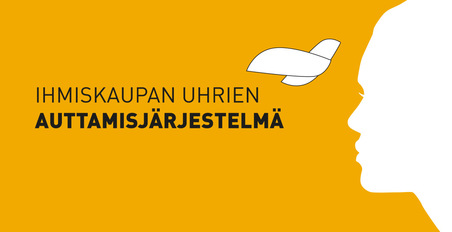These actors referred presumed victims to assistance
185 presumed victims of human trafficking, more than ever before, were referred to the National Assistance System for Victims of Human Trafficking (NAS) during the first six months of 2022.

A public (governmental or municipal) actor, an NGO or, for example, a religious congregation can refer a person to the NAS if they think that person is or has been a victim of human trafficking. The NAS collects information about referrals to find out, where presumed victims are most likely to be identified and referred to the NAS.
Perhaps more than anything else, this information shows where there is knowledge about human trafficking; where making referrals to the NAS has become a part of an organization’s routines, and where making referrals is seen as something that benefits the presumed victims.
What the collected information doesn’t necessarily show is where victims of human trafficking would most likely be encountered. Sometimes a victim may have been identified and their situation has been taken into account, but they are not referred to the NAS, because the victim is not considered to benefit from the referral, or because the victim themselves do not wish to be referred to the NAS.
Not being identified may leave some in danger
The situation becomes problematic if nobody identifies that a person may be a victim of human trafficking or related exploitation. This may allow for the exploitation to continue or the person to remain at risk of falling victim to exploitation again, because they are not offered the right kind of support in order to recover from their experiences. This will also allow for the criminal activity behind the exploitation to continue, and potentially involve new victims.
There are good reasons as to why Finland is bound by international treaties requiring that victims of human trafficking are identified and assisted!
Sometimes persons have sought help from the NAS, whose exploitation had not been identified in any other services they may have attended. These persons have found information about the NAS on their own. Finding information, however, is not easy for everyone: it requires language and reading skills, and a possibility to use the internet. It also requires, that the person has identified that they may be a victim of human trafficking. This is often not the case.
If a victim of human trafficking or related exploitation is unable to seek help on their own (which is very typical to the dynamic of human trafficking), it is down to others to identify their situation and know what to do. The victim should at least be informed of their right to help, where this does not put anyone involved in danger. This, then, requires that the person who encounters a victim of human trafficking, is aware of the phenomenon.
Knowledge is power, and the NAS is dedicated to providing information, guidance and training to those who need it. At the moment, the NAS is involved in several training projects targeted at both the public and third sectors.
Victims exploited in Finland are most often identified by an NGO
22 persons sought help from the NAS themselves during the first six months of 2022. At the same time, a public authority, NGO or other actor referred 163 persons to the NAS.
The largest number of referrals was made by the Finnish Immigration Service (47 referrals), with NGO Victim Support Finland holding 2nd place at 41 referrals. Victim Support Finland referred to the NAS especially persons who had been exploited in Finland. In fact, NGOs referred to the NAS persons exploited in Finland twice as often as all public authorities combined. Public authorities were strongest at identifying persons, who had been exploited abroad.
Graph 1. Organizations who referred presumed victims to the NAS

Three out of four admitted as client
A person referred to the NAS is admitted as a client in the NAS, if that person is a presumed victim of human trafficking and if they need assistance because of it.
139 such persons were admitted as clients in the first six months of 2022, along with 26 of their children, who were also in need of assistance. 51 persons referred to the NAS were not admitted as clients because they were not considered to be victims of human trafficking or because they did not need the kind of assistance the NAS could offer. In the latter case, exploitation may have taken place several years ago. The NAS directs these persons to other available assistance and, where necessary, can, with their consent, contact such services on their behalf. Five referrals were pending a decision ono 30th June 2022.
63 clients were removed from the NAS during the first half of 2022. The most common reason for ending assistance was that the client no longer needed any special assistance: there was no threat on their life or safety, they were not a party to a criminal process related to human trafficking, and they did not need any special services. Many had found a job or a place to study. A new leaf had been turned. In average, these persons had been clients in the NAS for two to five years, some even eight. Some persons were also removed from the NAS after they returned to their native country with assistance, our of their own free will.
Not all cases were this positive, however. A few clients were removed from the NAS’s client lists, because they had gone missing or been removed from Finland to another country.
Graph 2. Decisions made by the NAS in the first half of 2022
